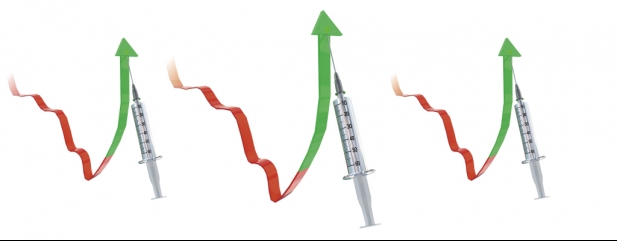Archived article
Please note that tax, investment, pension and ISA rules can change and the information and any views contained in this article may now be inaccurate.
Why there is more to come from AstraZeneca as its shares hit a new record high

Shares in pharmaceutical group AstraZeneca (AZN) are trading at a record high and it is battling Shell (SHEL) to be the largest company by value on the UK stock market.
There are plenty of reasons to expect shareholders to receive further rewards in time, given a packed schedule of new treatment launches which could help underpin double-digit revenue growth, improved margins and bumper cash generation.
The wider sector also looks well positioned given the reality that healthcare is defensive – i.e. spending in this area tends to be resilient in both good and bad economic conditions.
AstraZeneca’s share price gains in recent weeks have seen it move from approximately £86 per share to more than £100 with a series of encouraging updates as well as positive sentiment towards the healthcare space contributing to its rise.
A STRING OF GOOD NEWS
On 14 March AstraZeneca’s Lynparza drug was approved in the US as a treatment for breast cancer. A fortnight later, the company’s Evusheld antibody combination received the green light in the EU as a preventative treatment for Covid-19. The following day, its Ondexxya product received approval in Japan to treat people hospitalised with life-threatening bleeding.
These bits of good news followed full-year numbers on 10 February which encompassed a record fourth quarter revenue performance, up 63% year-on-year to $12 billion and ahead of the consensus forecast of $11 billion.
Its Covid-19 vaccine and sales associated with its $39 billion acquisition of rare disease specialist Alexion both contributed to the strong performance.
GROWTH PLANS
Anglo-Swedish concern AstraZeneca is headquartered in Cambridge and employs more than 80,000 people worldwide. It has a large and diverse portfolio of pharmaceutical products targeting major areas of disease like cardiovascular, respiratory, inflammation, rare conditions and cancer.
The pie chart shows the breakdown of AstraZeneca’s portfolio by disease area.
Investment bank Berenberg says: ‘The key drivers of near-term sales growth are the oncology (cancer) assets (Tagrisso, Imfinzi, Lynparza and Calquence), which require limited incremental investment.’
In essence, the company has already spent significant sums developing these drugs and is now able to target them at a broader range of cancers.
Drug development is inherently risky and is tightly regulated. The big pharmaceutical companies look to mitigate those risks by having highly diversified portfolios of different drugs. However, many are still reliant on certain blockbuster drugs for a big chunk of their revenue.
A classic example is AstraZeneca’s US counterpart Pfizer (PFE:NYSE) which generated large sales from its Viagra treatment for erectile dysfunction following its approval by regulators in 1998.
Typically, after six years or more a company loses exclusivity on a drug and sales are eroded by generic alternatives. Solutions include investing heavily in research and development to uncover new treatments or acquiring smaller businesses which have enjoyed their own success with developing drugs.
AstraZeneca made a big splash on the acquisition front with the purchase of rare disease firm Alexion in July 2021. The latter has a portfolio of therapies for the treatment of rare diseases caused by an uncontrolled activation of the part of the immune system which produces antibodies that remove damaged cells.
Rare disease treatments can benefit from an accelerated approval process because there are often no alternatives available.
AstraZeneca’s priorities for 2022 include strengthening research and development links between its existing business and Alexion and advancing the combined pipeline.
The company has initiated a review of the entire group in the wake of the Alexion deal aimed at integrating its systems, structures and processes for a one-off cost of $2.1 billion. The annual benefit, including previously outlined financial benefits from the Alexion transaction, is expected to be $1.2 billion from the end of 2025.
THE IMPACT OF COVID
AstraZeneca’s high-profile work on a Covid vaccine represented a departure for the group and one that has not been without headaches.
Initially sold at cost, with a pledge to continue this policy in the developing world, the vaccine nonetheless attracted scepticism over its effectiveness and safety, some of which has subsequently been debunked.
Given it isn’t an obvious fit with the rest of the business, the idea of spinning off its Covid-related assets has been mooted either through a separate stock market listing of the business division, a sale or joint venture with a vaccine specialist.
Covid has had knock-on effects across the whole healthcare system, including a focus on preventative medicine and on the digitisation of healthcare.
The use of so-called ‘telehealth’ – delivering health-related services online or over the phone – has, according to consultant McKinsey, increased 38 times on pre-Covid levels and AstraZeneca is looking to boost its own footprint in artificial intelligence, data science and digital technology.
ARE THE SHARES WORTH OWNING?
AstraZeneca’s shares are not cheap – they are trading in the region of 20 times 2022 consensus forecast earnings and yielding 2.2%. However, on a long-term view the company is an attractive investment given its strong growth profile.
Investors who don’t want to pay a premium rating may wish to look at rival pharmaceutical group GlaxoSmithKline (GSK) which trades on a much cheaper rating of 14 times 2022 consensus forecast earnings.
In Shares’ view, both companies would be good stocks to own as part of a diversified investment portfolio.
Important information:
These articles are provided by Shares magazine which is published by AJ Bell Media, a part of AJ Bell. Shares is not written by AJ Bell.
Shares is provided for your general information and use and is not a personal recommendation to invest. It is not intended to be relied upon by you in making or not making any investment decisions. The investments referred to in these articles will not be suitable for all investors. If in doubt please seek appropriate independent financial advice.
Investors acting on the information in these articles do so at their own risk and AJ Bell Media and its staff do not accept liability for losses suffered by investors as a result of their investment decisions.
Issue contents
Feature
- Looking for an ESG investment? They tend to fall into six different baskets
- Is your favourite investment trust in safe hands?
- Stocks and funds which could power up on nuclear's glowing prospects
- Why there is more to come from AstraZeneca as its shares hit a new record high
- Make your money work harder: invest your cash to stop it being eaten away by inflation
- This is why shares in ITV have been a bad investment for years

 magazine
magazine








